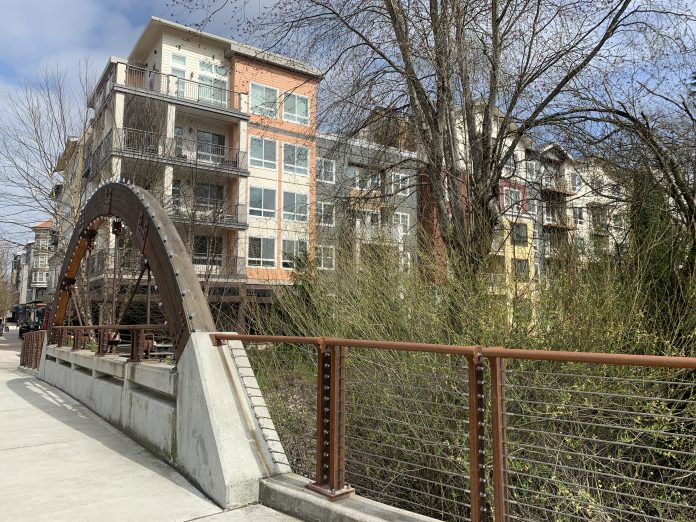
Walkability and wineries are transforming this bedroom community into a suburb with a distinctive vibe.
Few suburbs in the Seattle metro area are as difficult to pin down as Woodinville. In recent years, the City of Woodinville has largely succeeded in recasting its image from that of a sleepy bedroom community into that of a major tourist destination by capitalizing on its renowned wine tasting rooms and production facilities. In order to better highlight its attractions for would-be tourists and residents, Woodinville city government created a marketing strategy centered on the creation of winemaking and tourism districts, one of which is the Downtown District. Although not quite yet fully living up to its description, the Downtown District is set to transform into a thriving hub for Woodinville as major redevelopment plans create thousands of units of new housing, commercial space, and other amenities.
With so many changes ahead, Woodinville Mayor Mike Millman recently published a letter to residents emphasizing the need to embrace growth in response to the state’s Growth Management Act (GMA) and outlining Woodinville’s vision and goals for the future with the intention of soothing fears over the city’s projected growth. Across all planned multifamily developments, Woodinville is poised to add more than 3,000 new homes if all come to fruition. In a city of just over 13,000 residents, the growth spurt represents a pretty significant change.
I have traveled the area with the purpose of looking at other development projects. And I can confidently say the majority of Woodinville City Council is opposed to development that is out of character with our city. I am confident we will oppose creation of the “concrete canyon,” flat-panel look that has occurred elsewhere.
Mayor Mike Millman, April 14th, 2022
Woodinville’s boom is happening without light rail or bus rapid transit (BRT) in the works, like many other suburbs are getting even as they pump the brakes on growth (like Mercer Island) or consider such a move (like Lynnwood). Woodinville was cut from SR 522 Stride BRT plans in 2020, but it will get a less-frequent express bus connecting to the 522 BRT line, set to open in 2026.
Yet while big changes lay ahead, a present day visit to the Downtown District reveals two walkable mixed-used developments emerging like islands in an expanse of strip mall style retail and surface parking lots. One of these is Woodin Creek Village, an apartment, dining, retail development focalized on a central commercial plaza, which has already delivered about 550 homes in recent years. By next summer, developers estimate about 700 homes will be move-in ready, and the plan is for Woodin Creek Village to eventually offer about 1,000 additional homes.
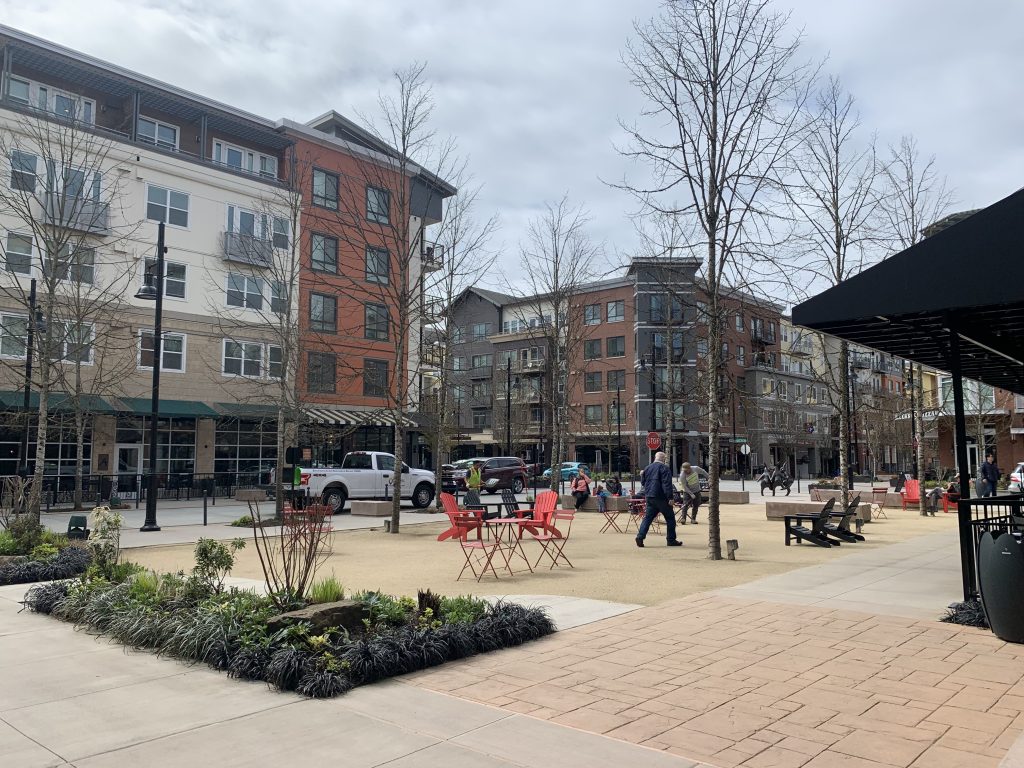
Woodin Creek Village is marketed as a luxury apartment community and strives to offer upscale amenities like capitalize on Woodinville’s winemaking reputation such as high-end restaurants and a European styled wine ally featuring tasting rooms and a storefront dedicated to promoting local tourism. This denser, more pedestrian-focused format comes in contrast to existing tourism districts like Hollywood and West Valley Districts located on the outskirts of town where large wine estates like Chateau St. Michelle and rows of tasting rooms located in strip malls are connected by major roadways and regional bike trails. The Sammamish River Trail connects Woodinvillle to Redmond and Bothell, where cyclists can connect on to the Burke-Gilman Trail and continue on to Seattle.
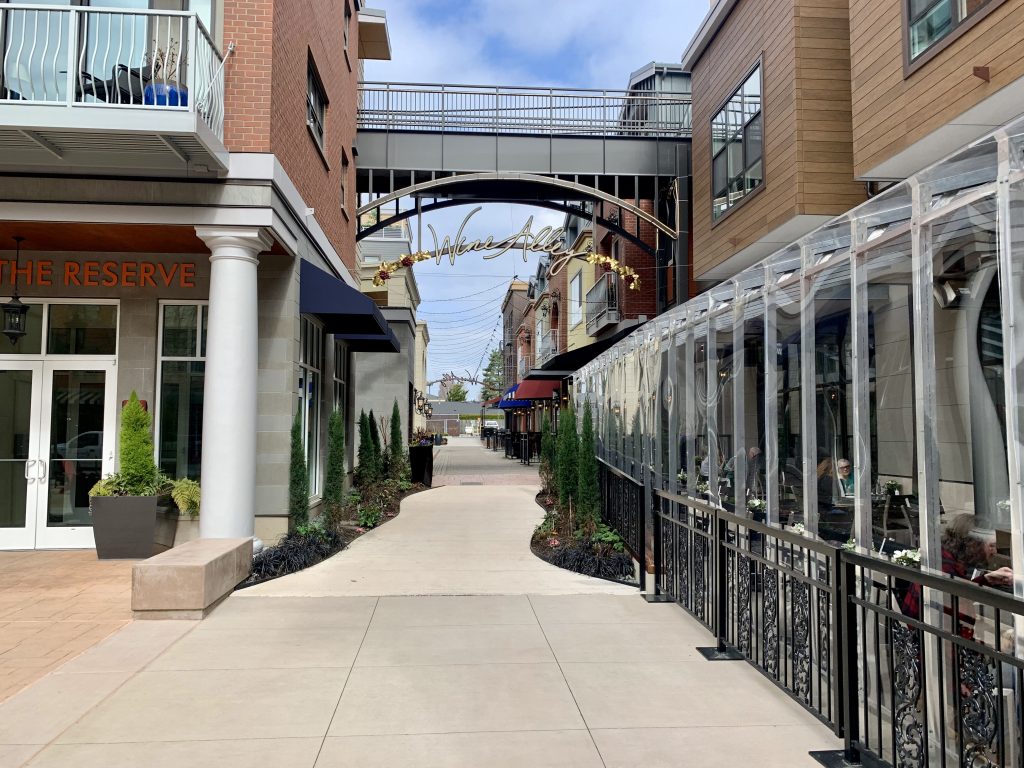
But outside of Woodin Creek Village street design quickly shifts its focus from pedestrians to cars. An aging, largely underutilized office park sits adjacent to the Village. While there are no currently posted plans for redevelopment, it appears unlikely that the land will remain untouched in the future since other major mixed-use developments are making headway in Woodinville with strong support from city hall.
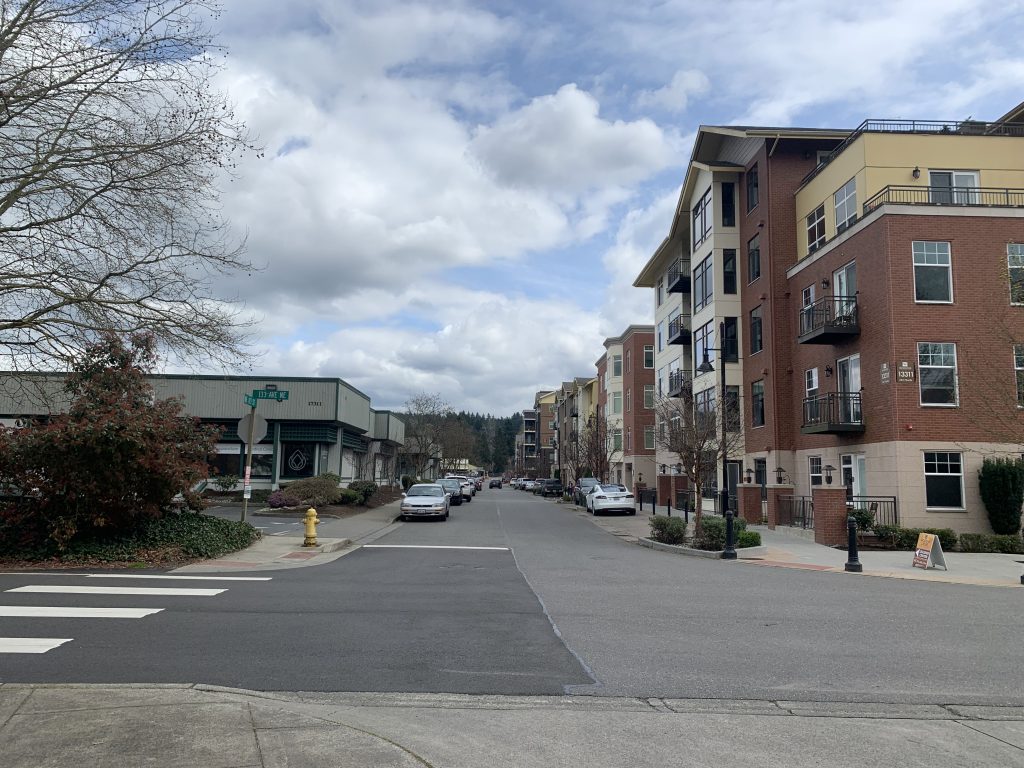
The next new development set to continue the transformation of Woodinville’s Downtown has been dubbed the Schoolhouse District in honor of the historic schoolhouse that has been preserved as part of the development. District Flats, the primary apartment community in the development, has brought 264 homes and an assortment of small to large commercial spaces to the area.
One notable attribute of the Schoolhouse District is its YMCA early learning center, which opens out into public playfields. These family friendly amenities are part of the City of Woodinville’s Civic Campus Project, which is part of a public-private partnership that has been in development for over 15 years. In keeping with the City’s desire to promote itself as a wine destination, District Flats has it’s own pedestrianized wine walk.
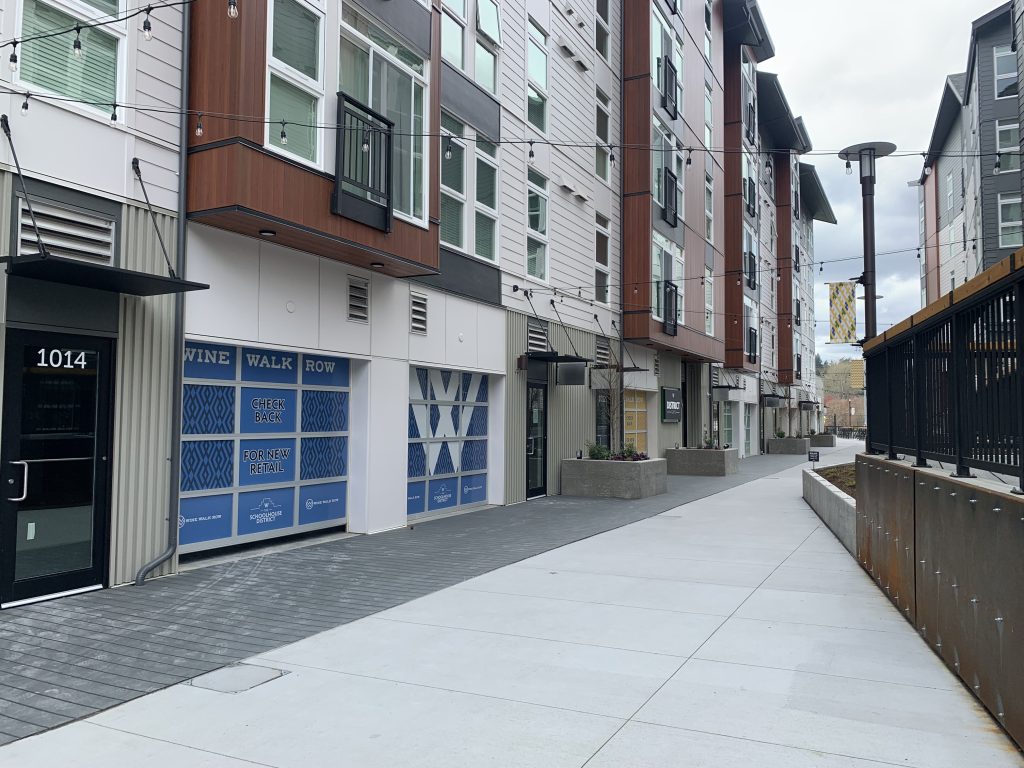
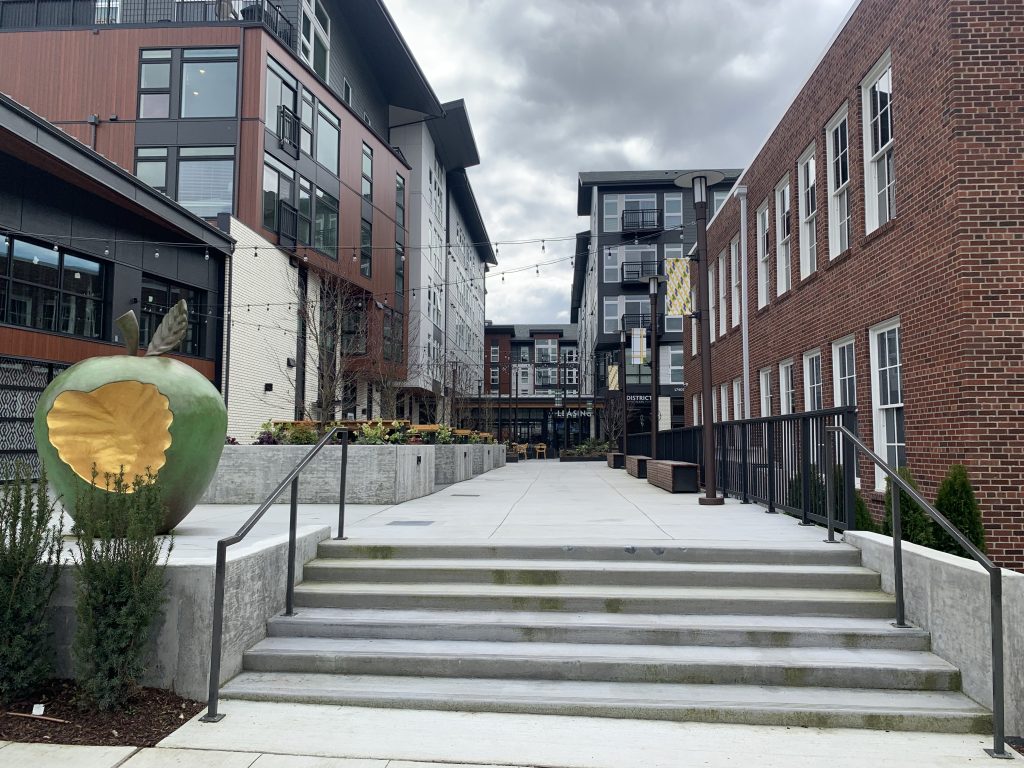
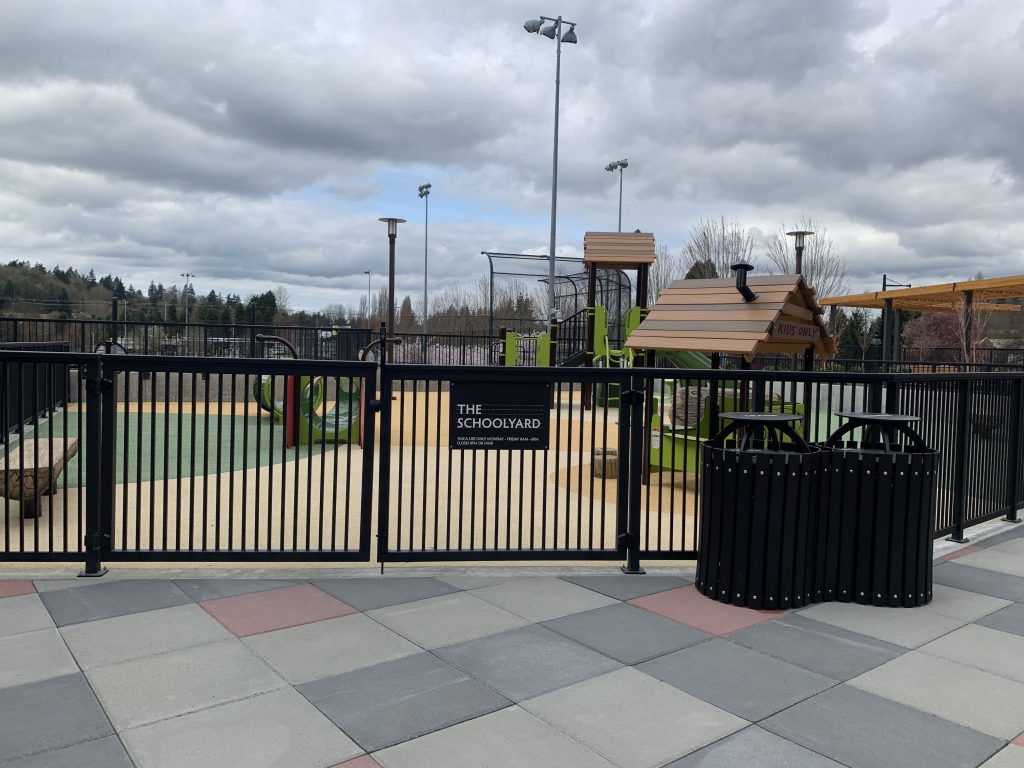
The north end of District Flats abuts NE 175th Street, one of the busiest vehicle thoroughfares in Woodinville. As residents move into District Flats, they will look out at the strips malls that lay across the wide and heavily trafficked street. However, their view will change over time as Eastrail Flats, which is being redeveloped by MainStreet Property Group, the same developer that created District Flats, replaces the existing structures. In upcoming years, Eastrail Flats, named after the 42-mile pedestrian and bike trail that stretches to Bellevue and Renton located just north of the project, will include approximately 206 rental apartment homes and 63 for-sale townhomes.
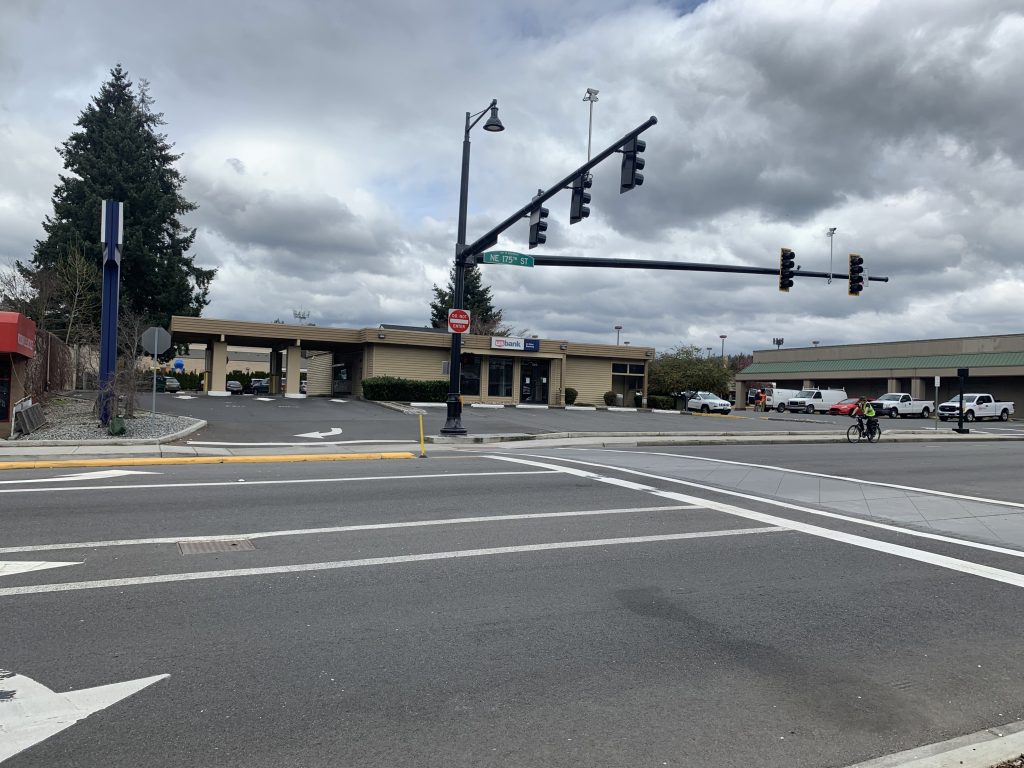
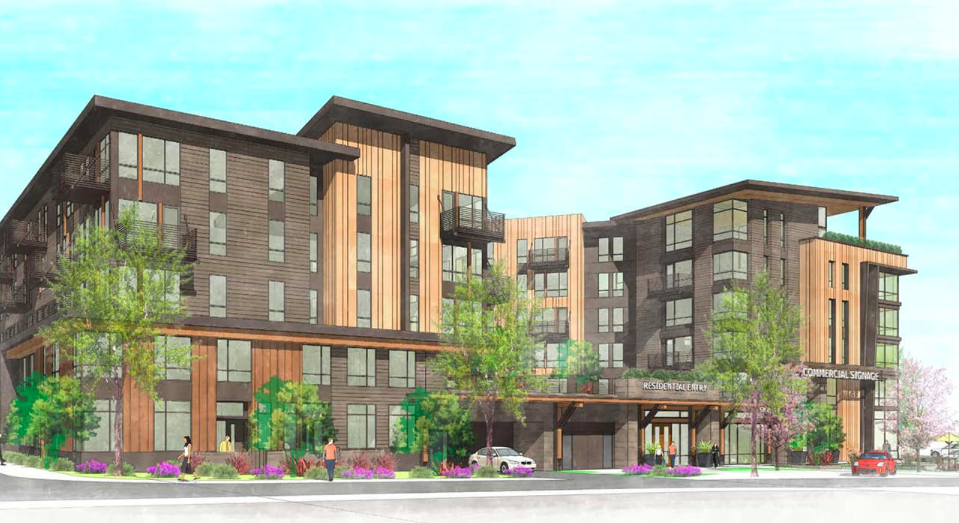
However, it’s the future Garden District, which also will be developed on the north end of NE 175th Street, that has rightfully generated the most buzz. Located on the current site of Molbak’s Garden + Home, a longtime institution in Woodinville, the future 19-acre development is planned to unfold over five phases eventually culminating in the creation of 1,200 homes, 400,000 square feet of commercial space, a new Molbak’s garden store, and two acres green space, some of which will include gardens managed by Molbak’s. Woodin Creek, which currently flows underground the area, is also set to be restored as part of the redevelopment efforts.
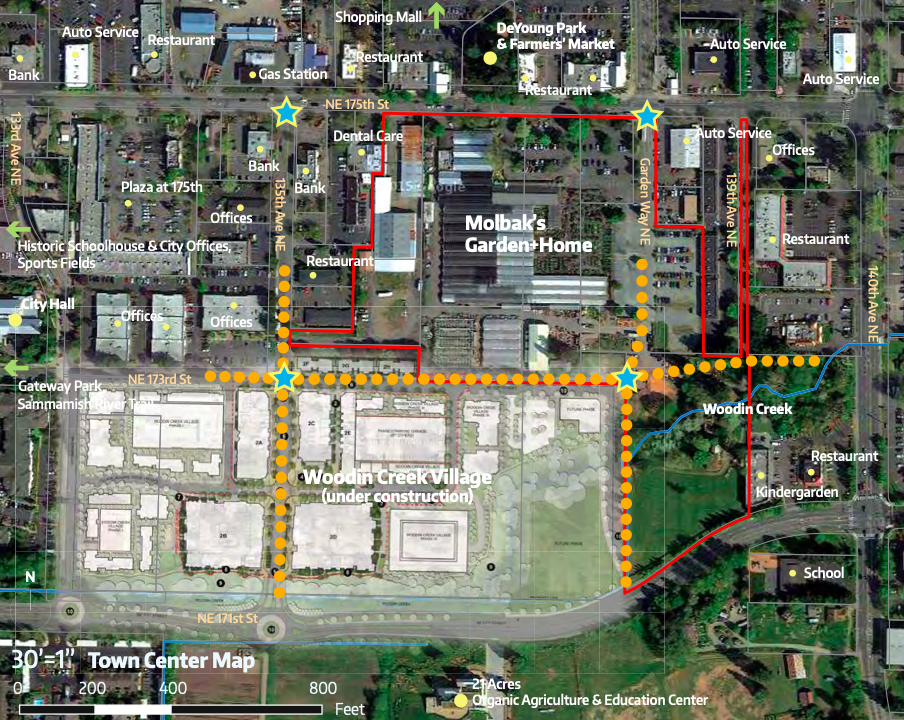
Similar to other plans unfolding in Woodinville’s Downtown, the Garden District has been a long time in the making. Back in 2008, the Molbak’s family sold their land to Green Partners LLC, which has connections to an investment firm associated with Bill Gates’ family. Since then Molbak’s has continued to operate their garden center on the site. Over a two year period, the UW Green Futures Lab completed a community visioning and planning process for the site under the leadership of professors Nancy Rottle and Julie Kreigh. Design alternatives created by the university students who worked on the project will be used to inform final site design. Currently phase one of the project is slated to include 220 apartment homes and 250,000 square feet of retail space constructed over underground parking. No information has been posted as of yet on the Garden District’s future phases.
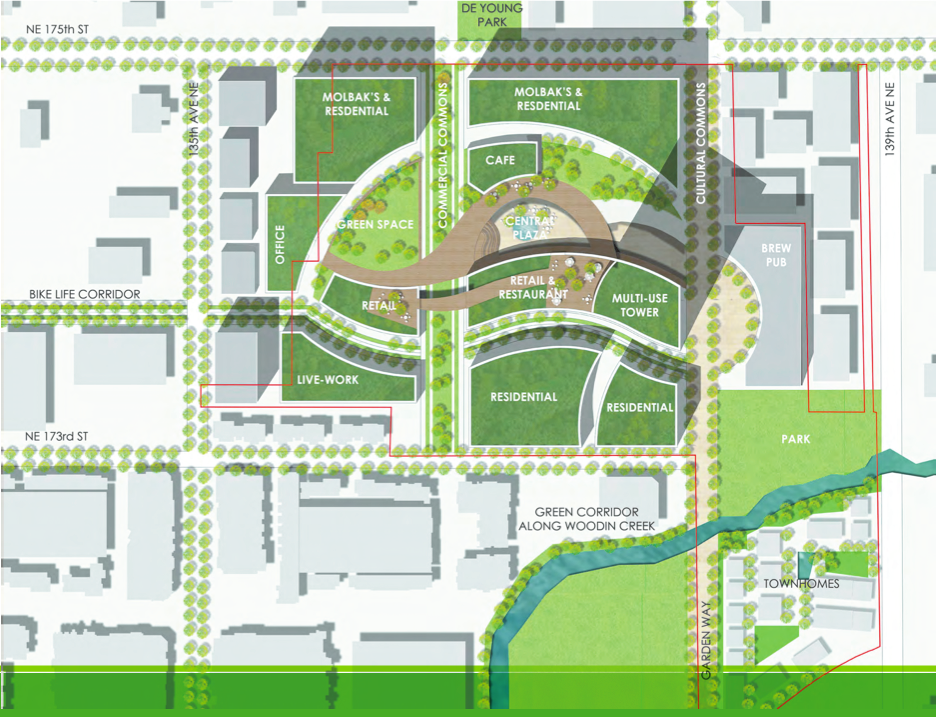
One more major development effort has been announced for Woodinville, although uniquely it will not be in the Downtown District. The 19.5-acre Harvest development, located in the Hollywood District where many wine tasting rooms operate, will include a four star 165 room boutique hotel and spa, rental and for sale housing, and commercial space. The development is being constructed on a long-time open lot across from the City’s Northshore Athletic Fields, and according to the mayor’s office it has already resulted into the creation of sidewalks, public parking, and road repair that were needed in the area. According to its master plan, Harvest will eventually include over 400 towntowns and apartments.
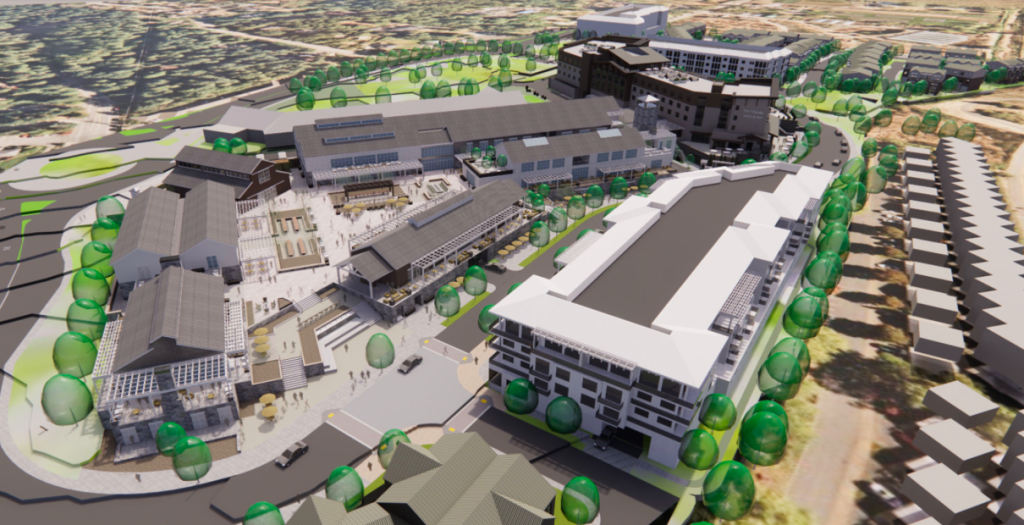
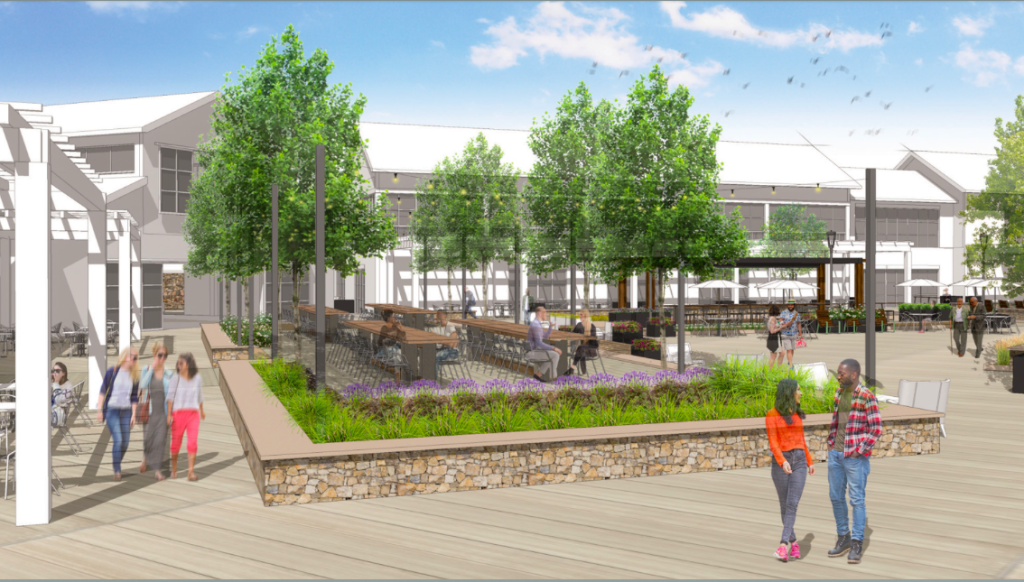
Showing how integral wine has become to Woodinville’s marketing and image, Harvest was previously referred to as the Wine Village. Yet despite all of the marketing push from the City of Woodinville, today if you undertake a search of the top U.S. wine destinations to explore, you are much more likely to find Pacific Northwest locales like Walla Walla in Washington, Willamette Valley in Oregon, or even Boise, Idaho, cited as must-see places to visit rather than Woodinville. However, if the city’s redevelopment efforts unfold as planned, it’s possible that in the not-so-distant future, this suburb that only a few decades earlier was nearly annexed into the nearby City of Bothell, will continue to distinguish itself on both the regional and national level.
Natalie Bicknell Argerious (she/her) is a reporter and podcast host at The Urbanist. She previously served as managing editor. A passionate urban explorer since childhood, she loves learning how to make cities more inclusive, vibrant, and environmentally resilient. You can often find her wandering around Seattle's Central District and Capitol Hill with her dogs and cat. Email her at natalie [at] theurbanist [dot] org.


